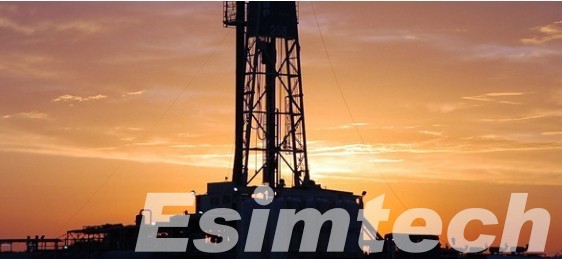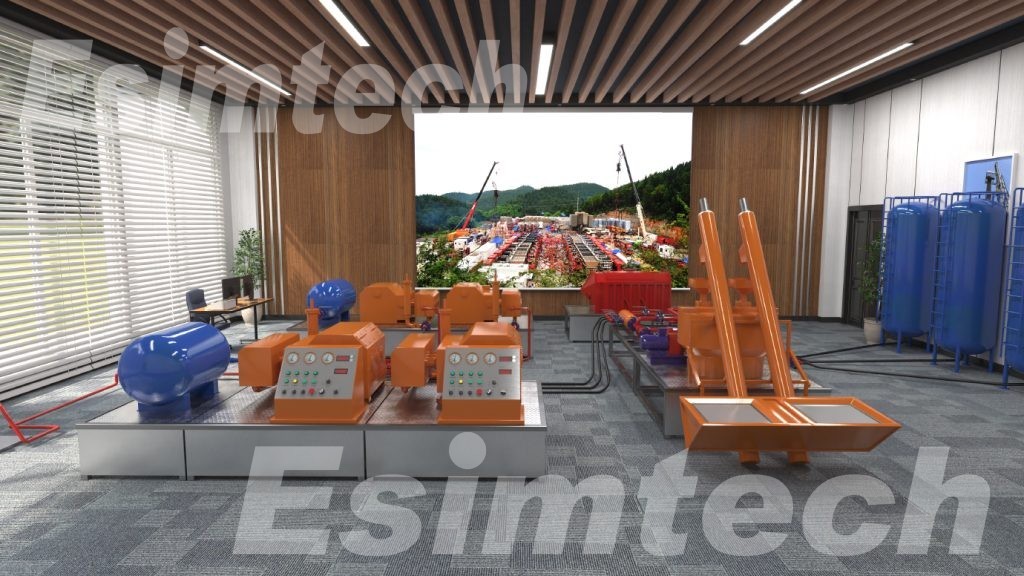An Overview of Oil and Gas Production Process and How Simulation Used to Enhance it
The oil and gas industry plays a pivotal role in powering the global economy, and the efficient extraction and production of hydrocarbons are critical for meeting the world’s energy demands. Achieving optimal performance in oil and gas production involves a complex and multifaceted process that spans exploration, drilling, extraction, and refining. In recent years, simulation technology has emerged as a key enabler, revolutionizing the way the industry approaches various aspects of the production process.

Oil and Gas Production Process Overview
Oil and gas production is a complex and multifaceted process that involves the exploration, extraction, and processing of hydrocarbons to meet global energy demands. The journey from discovering a potential reservoir to delivering refined products involves several key stages. Here is an overview of the oil and gas production process:
Exploration
- Seismic Surveys: The process begins with seismic surveys to analyze subsurface rock formations. Seismic waves are sent into the ground, and their reflections are recorded to create a detailed picture of the subsurface.
- Geological Studies: Geologists analyze surface rock outcrops and data from seismic surveys to identify potential reservoirs. They evaluate factors such as rock types, structures, and the presence of hydrocarbons.
- Exploratory Drilling: If a potential reservoir is identified, exploratory drilling is conducted to confirm the presence of hydrocarbons and assess the reservoir’s characteristics.

Drilling
- Well Construction: Once a viable reservoir is confirmed, drilling operations begin. Well construction involves drilling a hole into the earth and installing casing to protect the wellbore.
- Drilling Fluids: Specialized fluids are circulated during drilling to cool the drill bit, remove cuttings, and maintain wellbore stability.
- Logging and Evaluation: Logging tools are used to assess the properties of the rocks surrounding the well. This data helps determine the potential productivity of the reservoir.
Production
- Well Completion: Following the drilling phase, the well undergoes completion to facilitate the extraction of hydrocarbons. This entails the installation of production tubing, wellhead equipment, and other essential components required for the production process.
- Well Stimulation: Various techniques, such as hydraulic fracturing (fracking) or acid stimulation, may be utilized to optimize the flow of hydrocarbons from the reservoir to the wellbore.
- Production Facilities: Upon surfacing, the hydrocarbons are transported to production facilities for preliminary processing. This phase often involves the separation of oil, gas, and water to refine and streamline the extracted substances.

Processing
- Separation: Within processing facilities, the distinct elements of oil, natural gas, and water undergo separation, typically achieved through methods such as gravity separation and other advanced separation technologies.
- Treatment: Following separation, the individual components undergo additional treatment to eliminate impurities and adhere to stringent quality standards. This involves the removal of water and contaminants from the oil and gas streams.
- Transportation: Processed oil and gas are then conveyed through pipelines, ships, or alternative means to refineries or designated distribution points. This crucial step ensures the efficient transfer of the refined resources to meet various demands in the market.
Refining (Optional)
Refinery Processing: If the production site is not directly connected to a refinery, crude oil undergoes refining. Refineries break down crude oil into its components and produce refined products such as gasoline, diesel, and petrochemicals.
Distribution
- Transportation: Refined products are transported to distribution centers and end-users through pipelines, trucks, ships, and rail.
- Storage: Intermediate and final products are stored in tanks and terminals before being distributed to meet market demands.

End Use
- Utilization: Processed and refined products find diverse applications, serving purposes such as transportation, heating, electricity generation, and acting as essential feedstock for the petrochemical industry.
The Role of Simulation in Oil and Gas Production Process
Simulation technology plays a crucial role in the oil and gas production process, offering a range of benefits that contribute to improved efficiency, safety, and decision-making.
Types of Simulations in Oil and Gas Production
- Reservoir Simulation
- Image: Imagine a complex 3D map of the reservoir, showing rock formations, fluids, and pressure gradients. Reservoir simulation software builds this map using geological data and then predicts how fluids will flow through the reservoir over time.
- Benefits: This helps optimize well placement, production rates, and enhanced oil recovery (EOR) techniques, maximizing hydrocarbon extraction.
- Drilling Simulation
- Image: Picture a virtual drilling rig, testing different drilling parameters like weight on bit and rotary speed. Drilling simulation software models the interaction between the drill bit and the rock, predicting potential problems like stuck pipe or wellbore instability.
- Benefits: This allows for safer and more efficient drilling, reducing downtime and costs.

- Production Simulation
- Image: Think of a complex network of pipelines and processing facilities. Oil production simulation software models the flow of oil and gas throughout this network, identifying bottlenecks and suggesting ways to improve efficiency.
- Benefits: This leads to increased production, reduced energy consumption, and lower operational costs.

Impacts of Simulation on the Industry
- Enhanced Safety: Simulations play a pivotal role in anticipating potential hazards, mitigating the risk of accidents and blowouts, thereby safeguarding personnel and the environment.
- Improved Efficiency: Through the optimization of drilling and production strategies, simulations contribute to expedited turnaround times and cost reductions, enhancing operational efficiency.
- Increased Productivity: Precise reservoir predictions and optimal well placements, facilitated by simulations, maximize hydrocarbon recovery, ultimately bolstering overall profitability.
- Sustainable Practices: Simulations prove instrumental in optimizing resource utilization and minimizing waste, thereby contributing to the adoption of sustainable practices and reducing the environmental footprint of operational activities.
Conclusion
The process of oil and gas production is intricate and ever-evolving, with simulation technology emerging as an essential tool for optimizing its multifaceted components. Whether in the realms of exploration, drilling, reservoir management, or facility operations, simulations serve to elevate decision-making, enhance efficiency, and foster safety and sustainability within the industry. As technology advances, the integration of simulation tools is poised to play an increasingly significant role in shaping the future landscape of oil and gas production.

